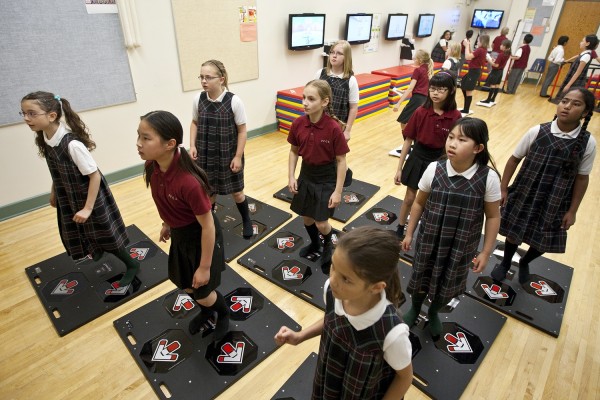In The World is Flat, Thomas Friedman wrote, “When I was growing up, my parents told me, ‘Finish your dinner. People in China and India are starving.’ I tell my daughters, ‘Finish your homework. People in India and China are starving for your job.’”

Our children will face increased competition as globalization makes the world smaller. Image courtesy of onlinereadingtutor.com
Friedman is right. Our children are growing up in a vastly different world than the one we experienced. They have more access to technology and information than any other generation before them. And thanks to globalization, so does the rest of the world.
In the next 10-20 years, our kids will be forced to compete for jobs on a global scale. As parents, we have a responsibility to ensure that they are ready for this competition. However, many parents are crippling their children by not engaging with them about the media they consume. We need to help our children learn to harness technology by teaching them to live a balanced life – so that they will be ready to compete on a global scale. One way to do this is to encourage “positive” screen time.
The dangers associated with children and screen time are well documented. They include issues such as obesity, irregular sleep, and behavioral problems. These are real and serious challenges that parents need to be concerned about – especially in the summer months, when screen time can increase dramatically. Many parents respond to this research by turning off the television and eliminating screen time altogether. But this may not be a sustainable solution – and it may actually be detrimental to the long term employability of the child.
A better solution might be to channel screen time into educational and productive purposes. Here are three ways that parents can harness screen time for the benefit of their children:
- Create a SOLE – SOLE stands for a Self-Organized Learning Environment, a term coined by Sugata Mitra during his 2013 Ted Talk. He showed us that children can actually teach themselves if they are provided with a computer and internet access. His theory has been tested many times in India and the results have been staggering. The SOLE concept is actually quite simple: first you ask a child a big question, (e.g. “what would happen if all of the insects on earth died?” or “why are there no animals bigger than a blue whale?”), and then you let them search for the answers online. As they go about finding the answers, the kids develop a sense of curiosity and the computer skills to research and discover.

Exergames encourage kids to get up and move. Courtesy of blogspot.com
- Workout While You Play – Exergames are a new trend in video gaming. These games combine elements of both gaming and exercise. All three of the major consoles have added exergames including Wii Fit, PlayStation Move, and Xbox Kinect. Exergames are even available on smart phones, which adds the benefit of outdoor consumption. The benefits of exergames include improved cardiovascular health, increased concentration, and a renewed sense of adventure.
- Find a Treasure – The Brain Chase Summer Learning Challenge is an online summer camp that combines best-in-class online learning curriculum with the mystery of a massive global treasure hunt. Every minute your children are logged on, they’re completing academic challenges and exercising their summer brains. Participants complete weekly challenges on Khan Academy, myOn, and others to unlock hidden clues to the location of a real buried treasure. Brain Chase also ships each participant a compass, a decoder ring, and a mystery project, forcing the young online learners to log off and complete some offline adventures.
In today’s society, completely eliminating screen time for our children can be unrealistic at best. A better approach might be for parents to harness the power of screen time to create enriching and empowering activities for our kids.
